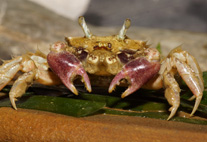Abstract
The genus Protochrysis (type species P. succinalis Bischoff, 1916, by monotypy) was established by Bischoff (1916: 139) for distinctive fossil insect remains of Eocene (Lutetian) age from the former Königsberg outskirts of East Prussia (now Kalinigrad, Russian Federation), referred at present to the Chrysididae (Hymenoptera) (Brues 1933; Carpenter 1985, 1992). However, an identical generic name Protochrysis had previously been proposed by Pascher (1911: 191) for a living protist (Cryptomonada). Bischoff’s (1916) name is therefore an invalid junior homonym. Carpenter (1985: 577) proposed a new replacement name for the fossil genus, but overlooked the fact that his newly proposed generic name Protochrysidis was also preoccupied, again by the name of another protist genus, Protochrysidis [Protista: Chrysomonada] described by Skvortzov (1969: 346) from Harbin (China). In fact, the protistan genus Protochrysidis had initially been published as chrysophyte algae following the International Code of Nomenclature for Algae, Fungi, and Plants (McNeill et al. 2012) by Skvortzov (1961: 4) who had failed to designate holotype of the species, but later fulfilled all conditions for valid publication in 1969 by providing necessary typification and reference to formerly published description and illustrations. At present chrysophyte algae are still maintained as Chrysomonada in protozoology due to a continued somewhat archaic tradition (Preisig & Anderson 2002). Protochrysidis Skvortzov, 1969 remained little studied since the time of its first description and is currently treated as an incertae sedis protistan taxon.

